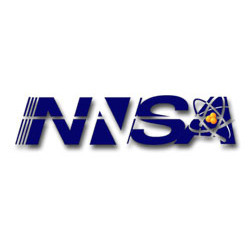GE, Hitachi Alliance Gets DoE Grant for Medical Isotope Production
by
Brendon Nafziger, DOTmed News Associate Editor | January 28, 2010

Public/private effort
to secure isotope supply
An alliance of GE Healthcare and Hitachi received $2.25 million from the U.S. Department of Energy's National Nuclear Security Administration to develop technology that would ease the medical isotope supply bottleneck, GE reported on Monday.
The partnership, forged in 2007 and called GE Hitachi Nuclear Energy (GEH), hopes to find a way to increase the domestic supply of molybdenum-99, the parent isotope of technetium-99, used widely in nuclear medicine but whose worldwide availability has been threatened by a series of unplanned reactor shutdowns.
"We will work towards bringing a sustainable supply of Mo-99/Tc-99m to
the marketplace and help to satisfy the U.S. domestic demand and
ultimately the global demand, as well," Edward Glascock, a spokesman for GE, told DOTmed News by email.
GEH aims to develop a system where molybdenum-98, another isotope, would be inserted into the bottom of existing, GE-built commercial reactors in place of a neutron-detecting instrument. After about a week, the isotope would gain an extra neutron, becoming Mo-99.
GEH expects the technology to supply 50 percent of U.S. demand for the isotope.
Unlike current methods for producing Mo-99, this technique would not involve fissioning, and would only involve low-enrichment uranium, unsuitable for making nuclear weapons.
McDermott International's nuclear energy subsidiary, Babcock & Wilcox Technical Services Group, also received funds from the government agency, pocketing $9 million to crank out the isotopes using a small reactor, Reuters reports. Their system also involves low-enrichment, non-weapons-grade uranium.
Both companies plan to match government funds with their own investments.
RUNNING LOW
Supplies of medical isotopes have been troubled since the aging National Research Universal reactor in Canada went offline last May to undergo repairs to fix a heavy water leak. The reactor produced nearly 40 percent of the world's Mo-99 supply. Another important reactor, the Dutch High Flux Reactor in Petten, the Netherlands, is set to go under the wrench in February. The Canadian reactor should be running again this spring, and the Dutch one by the end of the summer.
PROJECT TIMELINE
Glascock says the GE project will start over the next few years in order to meet the DoE's target of producing 3,000 "6-day" curies by 2013. A "6-day" curie is a unit of measurement describing the average amount of the isotope, which has a half-life of only 66 hours, that will be available after six days.
Research will first begin in GE-Hitachi's Wilmington, N.C. headquarters before possibly spreading out to other facilities.
